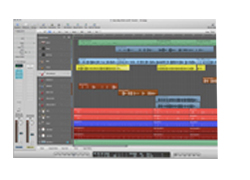Before getting into the meaning of arrangement, I want to take a moment to stress the importance of arrangement. Arrangement ultimately bridges the gap between the composition and the mix. Give that a moment to resonate, and I will clarify.
Arrangement refers to the organization of any aspect of a song. A song can be organized in many different ways and still be essentially the same song. The arrangement is simply the way in which the song is delivered.
While there are many different ways of thinking about arrangement, for this article I’m going to talk about three in specific: harmonic arrangement, structural arrangement, and the progression.
Harmonic Arrangement
The harmonic arrangement is the organization of instruments and their melodic or harmonic roles. The idea is to construct a sonic image using the natural timbre of sounds in the song. For example, do you have a flute playing a part, or a guitar? Which voicings do different instruments take, and what effect will that have on the listener? This is entirely the producer’s or arranger’s choice – and there aren’t really “rights” or “wrongs”, but here are some ideas:
Harmonically dense sounds such as accordions, organs, string ensembles, etc, take up a lot of sonic space. Two easy ways of making these harmonically rich sounds work well is to:
1) Have them doing simple parts that coincide with the main melodic movement. This is a good way to add fullness to the sound, and to vary the progression. For example, you can have your main theme and bass playing during the first part of the verse, and have a string ensemble doing something simple and basic come in during the second part of the verse. This keeps the energy building throughout the verse without actually causing dramatic changes.
2) Have them take over as the main focus with few other harmonic parts at the same time. Having an accordian front and center is going to eat up a lot of sonic space. To retain clarity, you can make this element focal, and keep everything else sparse. Between a string ensemble, a bass, rhythmic elements and vocals, your mix won’t feel sparse at all.
Contrary to these ideas, you could go for the “Wall of Sound” idea, where you move tons of dense harmonic parts and mush them all together, then stuff them way behind your lead elements. This creates an extremely dense sonic pallet, but it comes with the cost of instrument clarity.
When the harmonic arrangement is not well thought out, the mixer is often tied down to using a lot EQ in order to allow the instruments to be heard correctly.
Harmonically open sounds such as flutes, clarinets, sine wave synths, or even the middle timbre instruments like trumpets and pianos function differently.
You can create more elaborate counterpoints – but keep in mind these two ideas.
1) Separation. Put things in their unique pitch ranges – if you have a counterpoint working in the same range of notes, you lose the clarity not just of the instruments, but of the harmonic lines as well.
Separate the notes in range more and suddenly you have multiple dynamic harmonic lines that can be introduced or taken away through the course of the song to add dimension and development to the progression. The mix benefit here is that you won’t need much in the way of EQ to make these elements work together, if any.
2) Layering. You can always assign multiple instruments to the exact same role, creating a hybrid-timbral instrument. One of my favorite tricks is to double a rhythm guitar line with a cello. The harmonics are potent – stronger than simply layering up guitars (in my opinion). The trick in the mix is to make the separate layers blend, as opposed to trying to create separation.



















